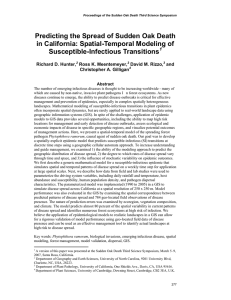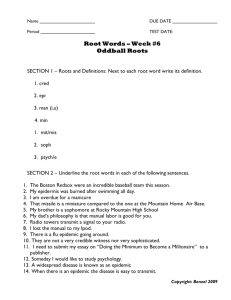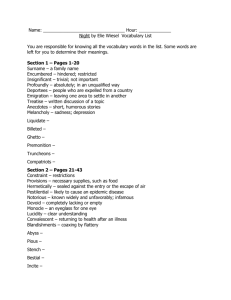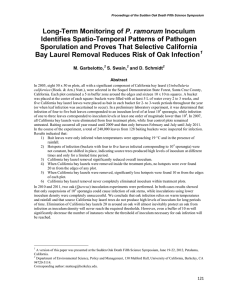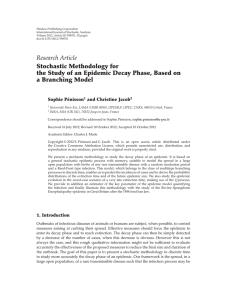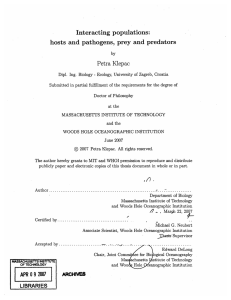Predicting the Spread of Sudden Oak Death in California (2010-2030): Epidemic
advertisement
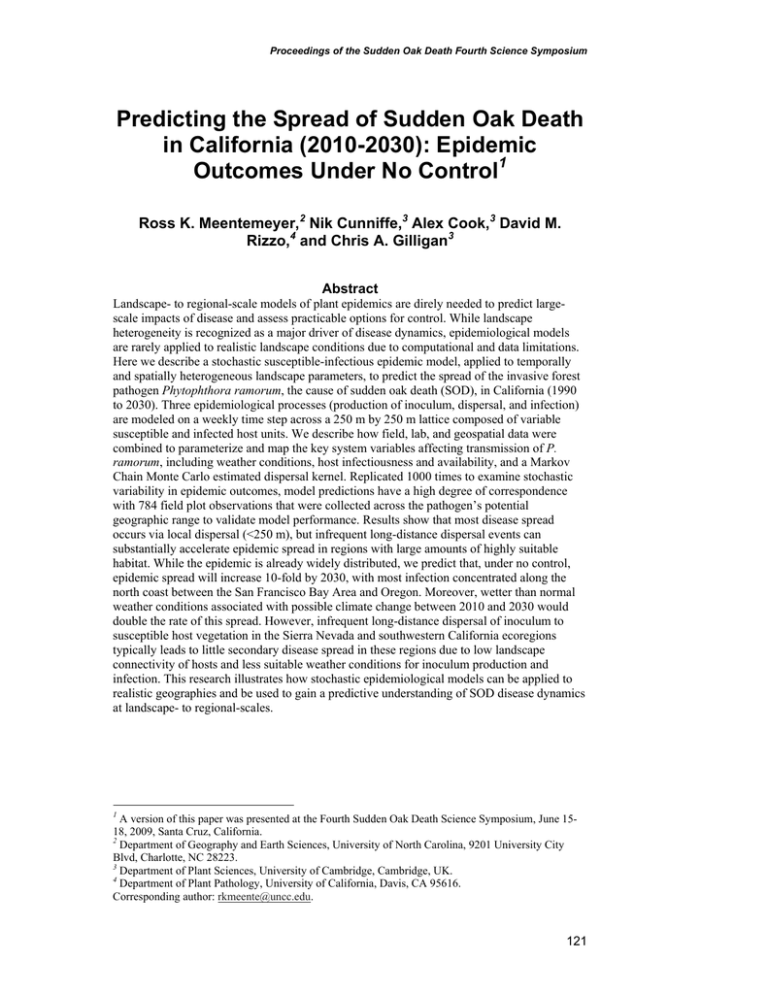
Proceedings of the Sudden Oak Death Fourth Science Symposium Predicting the Spread of Sudden Oak Death in California (2010-2030): Epidemic Outcomes Under No Control1 Ross K. Meentemeyer,2 Nik Cunniffe,3 Alex Cook,3 David M. Rizzo,4 and Chris A. Gilligan3 Abstract Landscape- to regional-scale models of plant epidemics are direly needed to predict largescale impacts of disease and assess practicable options for control. While landscape heterogeneity is recognized as a major driver of disease dynamics, epidemiological models are rarely applied to realistic landscape conditions due to computational and data limitations. Here we describe a stochastic susceptible-infectious epidemic model, applied to temporally and spatially heterogeneous landscape parameters, to predict the spread of the invasive forest pathogen Phytophthora ramorum, the cause of sudden oak death (SOD), in California (1990 to 2030). Three epidemiological processes (production of inoculum, dispersal, and infection) are modeled on a weekly time step across a 250 m by 250 m lattice composed of variable susceptible and infected host units. We describe how field, lab, and geospatial data were combined to parameterize and map the key system variables affecting transmission of P. ramorum, including weather conditions, host infectiousness and availability, and a Markov Chain Monte Carlo estimated dispersal kernel. Replicated 1000 times to examine stochastic variability in epidemic outcomes, model predictions have a high degree of correspondence with 784 field plot observations that were collected across the pathogen’s potential geographic range to validate model performance. Results show that most disease spread occurs via local dispersal (<250 m), but infrequent long-distance dispersal events can substantially accelerate epidemic spread in regions with large amounts of highly suitable habitat. While the epidemic is already widely distributed, we predict that, under no control, epidemic spread will increase 10-fold by 2030, with most infection concentrated along the north coast between the San Francisco Bay Area and Oregon. Moreover, wetter than normal weather conditions associated with possible climate change between 2010 and 2030 would double the rate of this spread. However, infrequent long-distance dispersal of inoculum to susceptible host vegetation in the Sierra Nevada and southwestern California ecoregions typically leads to little secondary disease spread in these regions due to low landscape connectivity of hosts and less suitable weather conditions for inoculum production and infection. This research illustrates how stochastic epidemiological models can be applied to realistic geographies and be used to gain a predictive understanding of SOD disease dynamics at landscape- to regional-scales. 1 A version of this paper was presented at the Fourth Sudden Oak Death Science Symposium, June 1518, 2009, Santa Cruz, California. 2 Department of Geography and Earth Sciences, University of North Carolina, 9201 University City Blvd, Charlotte, NC 28223. 3 Department of Plant Sciences, University of Cambridge, Cambridge, UK. 4 Department of Plant Pathology, University of California, Davis, CA 95616. Corresponding author: rkmeente@uncc.edu. 121

